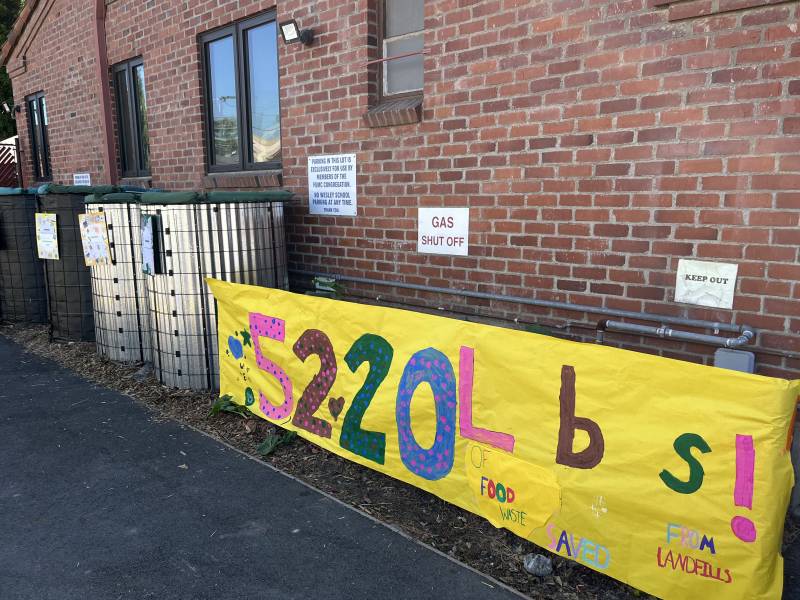How to inspire climate hope in kids? Get their hands dirty

“Ok! Want to crack this baby open?” says Steven Wynbrandt, a local farmer and composting consultant who has helped the school with its program.
The “Yeah!” from the dozens of students to his question is deafening.

They pepper Wynbrandt with questions as he breaks the ties that hold the container closed: “Is it going to smell?” “What’s it going to look like?” “Is it going to spill out?”
Rich black compost spills out from the container.
“It doesn’t stink at all!” says one of the kids. “It smells earthy!”
The 5,200 pounds of food waste diverted from a landfill is great news for the climate. Food that breaks down in a landfill produces methane – one of the most potent planet-warming gasses. But transforming organic material into compost means there’s less methane going into the atmosphere.
The Wesley School staff could have easily tossed the school’s food waste into a city-provided green bin. California law requires municipal food waste to be recycled. But taking it out of sight, which would have been easier, would have missed the point, says science teacher Johnna Hampton-Walker.
“When it’s invisible like that, they don’t see it,” she says. “They know, but it doesn’t sink in.”
When sixth grader Finn saw the finished compost pile, it sank in.
“That’s my orange chicken in there,” he says. “That’s not just like any food. Somewhere in there is my food.”
The school will use the compost on plants around campus. Some will be offered to families that want to use it at home, and whatever is left will be donated.

Fifth grader Kingston was excited to learn his food waste will help grow new food on campus. “It feels good that you’re doing something that helps the planet, instead of just sitting and watching it get destroyed,” he says.
That’s the response Wynbrandt wants. He wants to work with more schools like The Wesley School to start these composting programs. “A lot of us, especially kids, feel really overwhelmed and powerless and don’t know what to do,” Wynbrandt says about the climate crisis. “This is quite an existential crisis, and how do we make a difference? How do we make a dent?”
Therapist Jennifer Silverstein says part of helping youth understand the gravity of human-caused climate change is to build their tolerance to new – and sometimes devastating – information. She says during those difficult conversations, it helps to allow them to be outside in nature, and participate in collective action.
Fifth grader Sloan felt so empowered by the school’s compositing program she decided to take climate action outside of school. Along with several other fifth graders, Sloane says, “We did a lemonade stand at our friend’s house and we made over $200, and we donated it to the NRDC,” the Natural Resources Defense Council. They also helped create a petition to replace the plastic forks and spoons in the school cafeteria with compostable ones.
Fifth grader Leo says he’s found the composting program helpful.
“Knowing I’m a part of something good just helps me sleep at night,” he says. “If we can just work together, it’s all going to be okay and everything’s going to work out fine.”
In October it took two hours for the container of compost to be emptied and prepared to receive the next day’s lunch leftovers. The other four containers remain full of food waste that’s in the process of breaking down. Decorated posters on the outside of each container indicate when in the new year they can be opened so that the next generation of plants on campus can benefit from the rich soil.
9(MDAxOTAwOTE4MDEyMTkxMDAzNjczZDljZA004))





